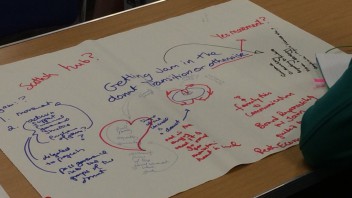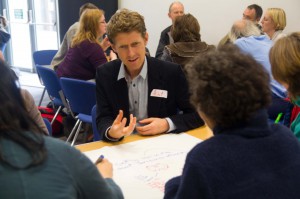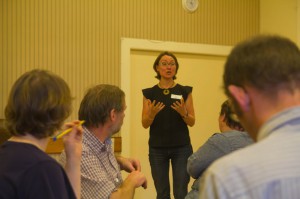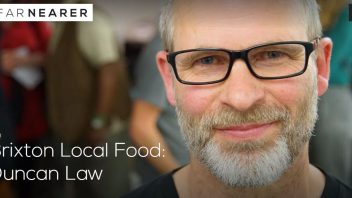
A couple of weeks ago, I was in a workshop at the Transition Roadshow in St Andrews. We were discussing how Transition Initiatives (TIs) can maintain an energised core group, alongside delivering great projects. As we exchanged ideas on what the role of the ‘core’ of a Transition Initiative is, a phrase emerged that potentially summed up why a TI would want to maintain a core group – ‘the perpetual ability to initiate change’.
At the workshop, we identified activities that the core of a Transition Initiative might be involved in to enable change. These ranged from developing a vision and strategy for the group to managing finances, fundraising, staff and volunteers, to organising events and initiating new projects, partnerships and connections. There was lots of conversation around the challenge of balancing these activities with running projects.
The beauty of the Transition movement is that it is not a ‘one size fits all’ approach. Groups respond to local needs, working with the people and resources they have. I know of Transition Initiatives that have morphed into their projects, and the original group has become dormant. For example the group have become focused on their local food activities and the running of these specific projects leaving other Transition related topics and interests aside during this time. I’ve met groups where the core is strong, and strategic work with e.g. the local council is their focus. I’ve spoken to groups doing some of both, and groups everywhere on the spectrum in between.
At the workshop, the ‘doughnut effect’ – lots of projects, but a lack of resources at the centre – was much discussed. Is it a bad thing? If an identified need or gap is being met through peoples’ energy being focused on a great project, then Transition is certainly having a local impact. On the other hand, without some resources in the core, where does the drive for future projects come from? And how able is the collective group to respond swiftly and effectively to opportunities and needs that arise locally?
Some groups experienced the ‘doughnut effect’ as cyclical. Whilst delivering a funded project, energy is focussed there. As the funding draws to a close, energy comes back to the centre to develop the next steps or new project. Some groups feel that the lack of time and resources to co-ordinate and develop their core work is limiting their ability to achieve their wider aims. A number have filled this gap by paying someone to help co-ordinate their work. (For useful guidance on introducing paid work to your Transition Initiative.)
Having some energy and resources at the centre has affectionately been described as ‘putting the jam in the doughnut!’ Transition Network is keen to learn more about how Transition Initiatives are finding funding to pay people to co-ordinate their core work, as well as help deliver projects.
We are inviting all Transition Initiatives to complete a short survey so we can learn more. All completed surveys will be entered into a prize draw to win a presentation from Rob Hopkins at one of your events (geography permitting, and we’ll pay for him to get there too, otherwise it can be by live internet feed).
We will use what we learn from this survey to create a guide to help Transition Initiatives fund their core work, which will be ready in the first quarter of 2015.
We would love to hear from you whether or not your Transition Initiative pays people to help co-ordinate its work or deliver project work. You can complete the survey here.
Author: Jo Taylor – Jo is a freelance consultant working with the Transition Network’s REconomy Project to explore how Transition Initiatives are resourcing their core work.
This REconomy Project work is generously supported by the Friends Provident Foundation.










Connect